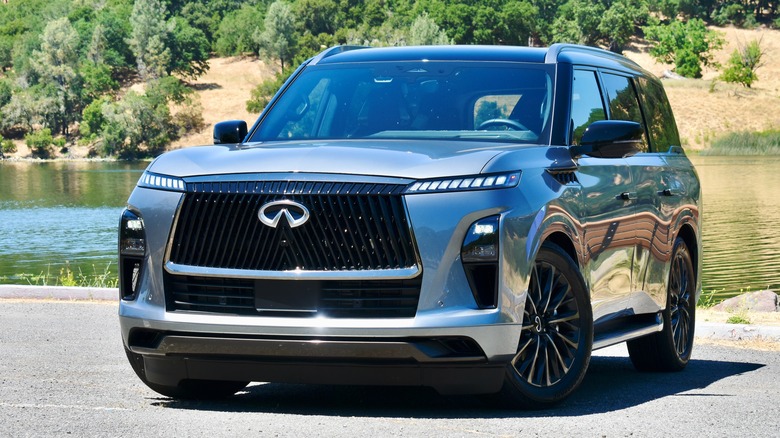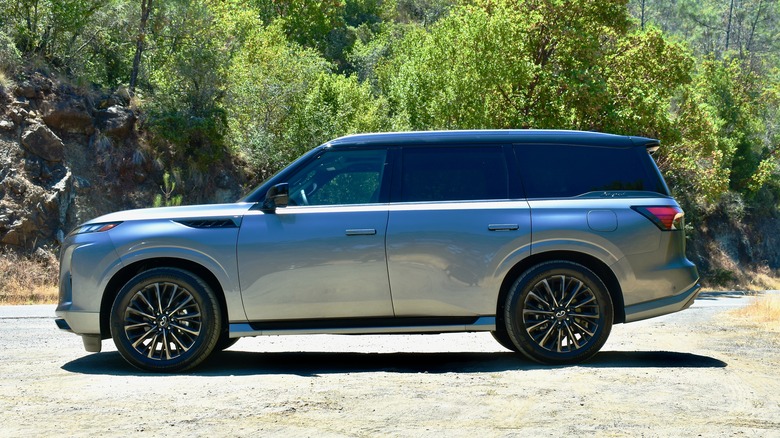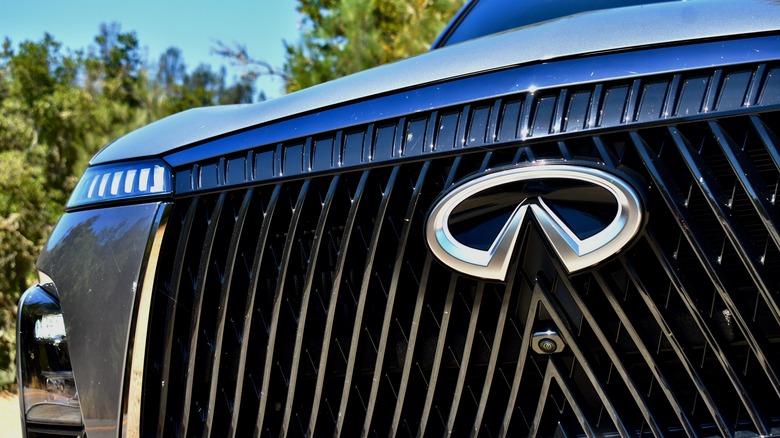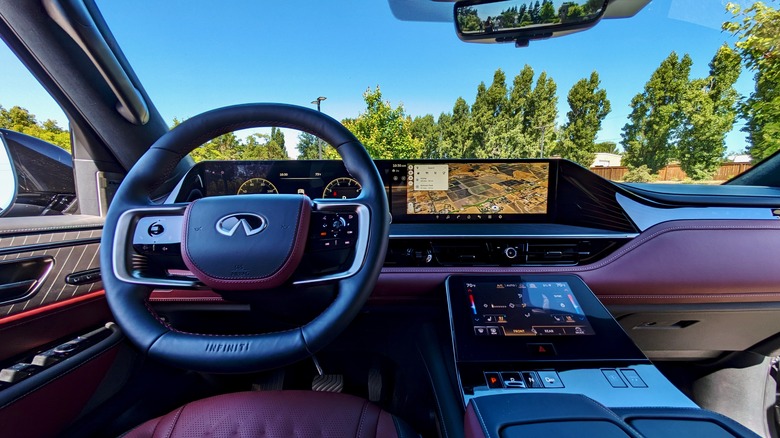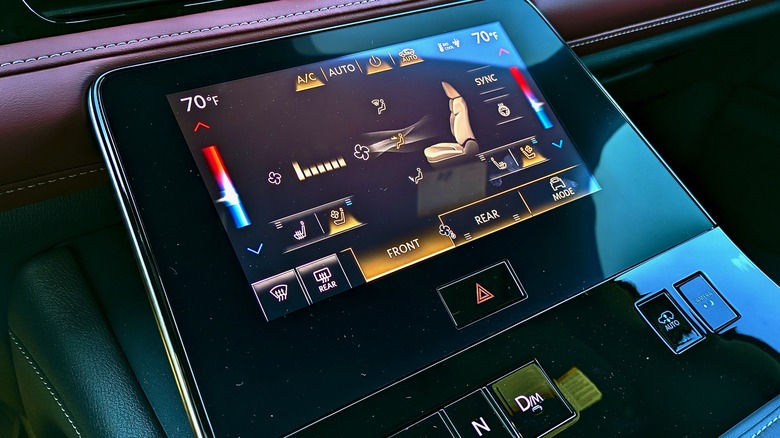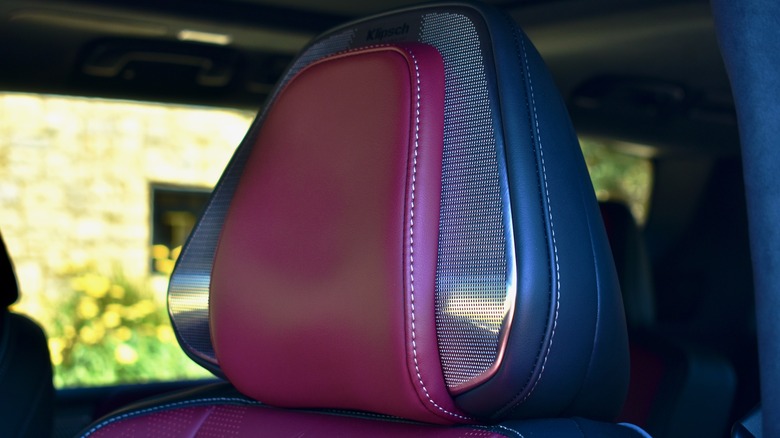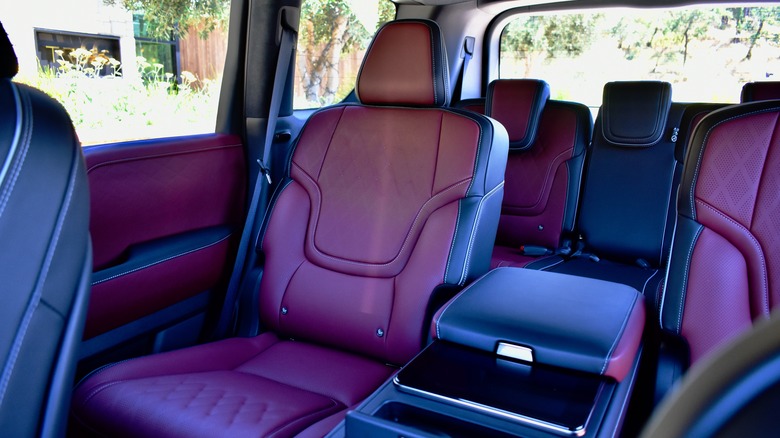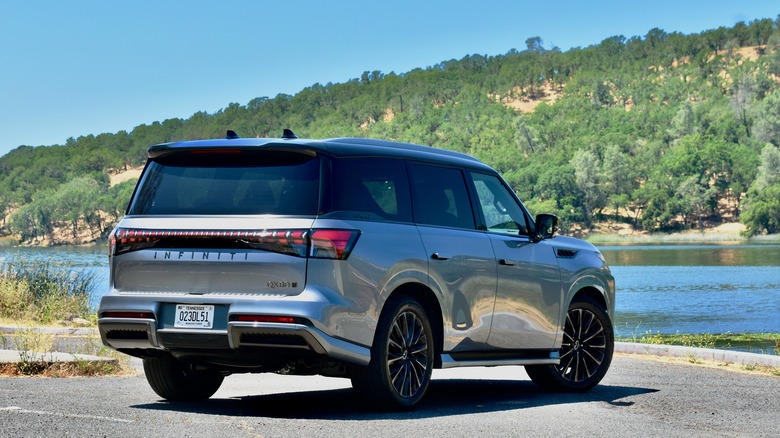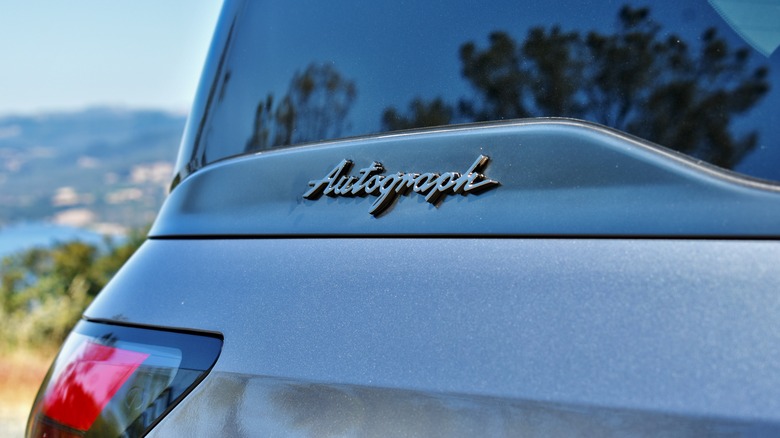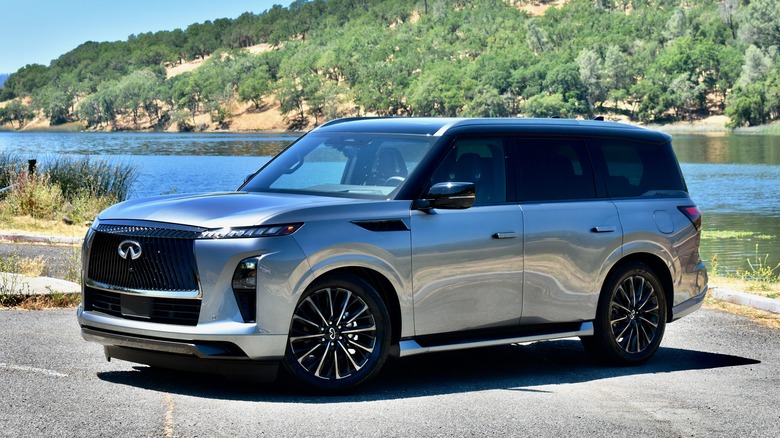2025 Infiniti QX80 First Drive: Bigger SUV, Bigger Price, Same Big Compromise
There was once nothing more prestigious than a big, comfortable sedan, but while country club parking spaces and suburban streets haven't gotten any wider, many buyers with indulgent budgets would now rather drive a truck-like body-on-frame SUV. That makes the redesigned 2025 Infiniti QX80 a very important vehicle for Nissan's luxury brand.
The Q45 was once considered Infiniti's flagship, but now that role defaults to the QX80, currently the most expensive vehicle in Infiniti's lineup, which also happens to be compromised nearly entirely of SUVs. It's the same story with the rival Cadillac Escalade and Lincoln Navigator, which have been crowned monarchs of their respective brands thanks to buyer and product planner apathy toward big sedans.
The QX80 is playing catchup to the Escalade and Navigator, as well as other rivals like the Lexus LX and Land Rover Range Rover thanks to Infiniti's slothful approach to product updates. This is the first true redesign of the QX80 (previously known as the QX56) in nearly a decade, but that's not surprising from a brand that still has the 2014-vintage Q50 sedan in its lineup, and whose parent Nissan is only now retiring its GT-R sports car 17 years after that car's unveiling.
Better but, thankfully, not bigger
This is the fourth generation of Infiniti's full-size SUV. It launched for the 2004 model year as the QX56, adopted the QX80 name for 2013, midway through its second generation's production run, and was last fully redesigned for the 2017 model year.
The 2025 QX80 retains its body-on-frame architecture, but with a new frame that is strong than before. Torsional stiffness has increased by 25%, while lateral stiffness has increased by 57%, according to Infiniti. That helps create a greater feeling of solidity—always a challenge with vehicles that have a separate body and frame.
Exterior dimensions don't change much, which is good, because the outgoing QX80 was already a massive thing. The new model is about an inch longer, stands a fraction of an inch taller (although optional air suspension can now elevate it further), and is about three inches wider. This time, though, Infiniti's designers got even more creative with the ample canvas available to them.
Predictable styling changes
To compete with the bold-and-brash Escalade and Navigator for attention at the valet stand, the QX80 needed to be more than just another big box. So the designers gave it expected extra-large grille, flanked by split headlights with upper horizontal elements inspired by piano keys, and chunky vertical lower elements that make the front end look even wider than it is.
Split headlights are on the verge of becoming cliché; you can find them on everything from the Buick Envista to the BMW X7. Infiniti can't claim originality here, but it did anticipate the trend. Previous generations of QX80 and QX56 had headlights placed relatively low on the front fenders for regulatory reasons, Taisuke Nakamura, Infiniti senior design director, explained over dinner at the QX80 press drive in California's Napa Valley. The upper elements (actually daytime running lights) look right in their higher location, while the main lighting elements are low enough to avoid shining directly in other drivers' eyes.
Things become a bit less interesting as you move along the QX80's ample flanks. Some effort was made to add definition to the body sides, but they're still a vast expanse of sheet metal, along with more glass than the previous-generation QX80. At the back, a jutting rear spoiler and aerodynamic indents in the taillights that look like they were copied from the Toyota Camry help clean up the airflow.
Cabin gets a high-tech makeover
The interior feels like much bigger compared to the old QX80. Huge screens weren't really a thing when the last QX80 was designed, so the 2025 model's dashboard takes on a new look to accommodate a pair of 14.3-inch screens, one serving as the instrument cluster and another as the main infotainment screen. A third, 9.0-inch touchscreen on the center console handles things like climate control and drive modes, a la Lucid.
The screens are nicely integrated, framed by curved black trim pieces with metallic strands that have a vaguely Art Deco look. The theme is continued on the door panels and, if you opt for the top Autograph trim level (Pure, Luxe, and Sensory grades are also available), it's paired with semi-aniline leather upholstery with a quilted pattern. In the Autograph model, at least, the interior materials feel like a big upgrade over the previous-generation QX80, which felt more like a very nice Nissan rather than a true luxury vehicle.
Some Nissan bits do creep in, though. The instrument-cluster graphics look like they were lifted directly out of a Nissan product. It would have been nice for Infiniti to reskin things like Lincoln does with the Ford-based infotainment system in the Navigator. And, while the QX80 is the first Infiniti model to have Google built-in apps (including Google Maps, Google Assistant, and the Play Store), an unfortunate quirk of launch cadence means it gets these apps only after the humble Nissan Rogue.
Panopticon
The QX80 does get some notable features that distinguish it from the more mainstream offerings of its parent brand—including an Orwellian array of cameras that make maneuvering in tight spaces a bit easier.
The now-common surround-view camera system is enhanced with eight viewing angles and 3D rendering, as well as a front wide view that offers a 170-degree view around the front of the vehicle. An "invisible hood" angle shows what's directly in front of the vehicle at a low angle—very useful when driving something with a hood this tall. Front-facing camera views can also be shown across both 14.3-inch dashboard screens.
A digital rearview mirror and dash cam are also available, as well as an interior-facing camera. Infiniti suggests that this could be useful for checking on second-row passengers or, when connected to a smartphone app, making sure items weren't left in the car. It can also take in-car selfies.
Sound (and silence) for all
The 2025 QX80 is also the first vehicle with a factory Klipsch audio system. Lower-level Pure and Luxe models have a 14-speaker system, while Sensory and Autograph grades have a 24-speaker version that includes an 8-inch subwoofer, four roof-mounted speakers, and neat-looking front-headrest speakers.
While it might seem like Infiniti and Klipsch simply ran out of space to put more speakers, the headrest speakers in fact enable a function called Individual Audio. This routes things like phone calls and navigation directions through the speakers so passengers in other seats don't have their music (or sleep) interrupted by prompts to turn left at the next stoplight. We couldn't hear a driver's phone conversation from the third row; it was as if they were talking to themselves.
Hardcore audiophiles may be able to pick out some differences between the Klipsch system and the high-end audio systems available in other luxury SUVs, but we can say that sound quality was consistent across all three rows.
User-friendly interior
The camera and audio systems are well suited to a vehicle designed primarily to haul lots of people, but tech features aren't the only user-friendly aspects of the interior.
The redesign did not significantly change exterior dimensions, but engineers and designers did reshape the trunk area to increase space. Infiniti claims cargo-space improvements of 6%, 17%, and 28% behind the first, second, and third rows, respectively. That, along with the Infiniti's generally larger size, means more cargo space than a Lexus LX. The QX80 also has more cargo space behind its second and third rows than a Lincoln Navigator. But as with all three-row vehicles, actually using the third row leaves only a small shelf for cargo.
Some competitors offer a bit more headroom or legroom in certain rows, but every row feels as spacious as one would hope it would be in a vehicle this big. Even the third row is decently comfortable for shorter adults: the windows now extend further back for an unobstructed view out, while stadium seating elevates the second and third rows for a clear view forward as well. Second-row passengers get their own touchscreen for climate control and other functions. Power-folding second- and third-row seats are available, and can even be controlled from the front touchscreen.
Fewer cylinders, more power
Like the rival Lexus LX, the QX80 swaps a naturally-aspirated V8 for a twin-turbocharged V6 as part of its redesign. The results of the transplant look encouraging at first glance: the 3.5-liter V6 produces 450 horsepower and 516 pound-feet of torque, substantial increases over the 400 hp and 413 lb-ft of torque produced by the outgoing V8. A nine-speed automatic transmission also replaces the previous seven-speed automatic, offering a greater spread of gear ratios to improve acceleration and fuel economy.
The V6 certainly feels more urgent than the old V8, which wasn't exactly lacking in power but doled it out in a relaxed manner. Like other modern turbocharged engines, the V6 generates a wave of torque that draws you away from stops like a lost flip-flop in a swell. The result is predictable, drama-free acceleration. It's a very pleasant experience, aside from the fake engine noises pumped into the cabin, which sounded like the bad Hollywood remix of the V6's true exhaust note.
Decreasing displacement and adding gears should improve fuel economy, but Infiniti only expects a best of just 18 mpg combined (with rear-wheel drive), which is merely 2 mpg better than the previous-generation QX80. Four-wheel drive is still available, and the QX80 will likely share its platform with the next-generation Nissan Patrol (sold as the Armada in the U.S.) off-roader, but Infiniti isn't emphasizing off-road driving here. The QX80 does take full advantage of its body-on-frame construction with an 8,500-pound maximum towing capacity, though.
Trick suspension can't mask truck-like handling
All 2025 QX80 models except the base Pure have standard air suspension with adaptive damping and adjustable ride height. The air suspension can raise the ride height 2.1 inches to enable the QX80's maximum 10.0 inches of ground clearance, lower itself 1.2 inches at highway speeds to reduce aerodynamic drag, or drop 2.8 inches down to allow easier access. This also gives the QX80 an Instagram-worthy lowered stance, which probably wasn't what the engineers were thinking about.
The suspension system can't fully disguise the QX80's body-on-frame construction. Some shudder still reverberates through the chassis over bumps, an inevitable side effect of having a separate body and frame. Despite Infiniti's claims that chassis engineers tried to make the QX80 handle more like a unibody crossover, it in fact drives as big as it looks. It's not the worst body-on-frame SUV to drive, but it won't be giving the Range Rover, BMW X7, or Mercedes-Benz GLS any trouble in the handling department.
For long highway slogs, the QX80 is also available with Nissan's ProPilot Assist 2.1 driver aid. This enables hands-free driving on mapped stretches of highway, with driver monitoring to guard against distraction. Version 2.1 adds lane-change capability, although unlike the newer versions of the General Motors' Super Cruise system, ProPilot Assist will only change lanes when prompted by the driver. We were not able to test this feature out, though, as the system in our pre-production test vehicle was not functioning properly.
A worthy entry in a puzzling segment
Along with the technology, powertrain, and design, Infiniti has updated the QX80's price to current standards.
With the mandatory $1,995 destination charge, pricing starts at $84,445 for a base Pure model with rear-wheel drive. That's a big step up from the $76,045 base price from 2024, but the 2025 model makes more features standard, including the dual-screen interface that weren't available on any version of the previous-generation QX80. Pricing goes up to $112,590 for the top four-wheel drive Autograph model, but most rivals also clear six figures in their top specs as well.
The 2025 QX80 makes up for lost time. Its interior is nicely appointed yet functional, and the available camera array and 24-speaker audio system check the gadget boxes. While it's hard to call it handsome, the styling creates some visual interest beyond the QX80's sheer size. But like other big SUVs, the ride quality and handling are more concessions than luxurious qualities. Given the popularity of these vehicles, a new QX80 needed to be given priority. But that just shows how many luxury car shoppers prefer size over substance.
